Understanding Hanfu: History and Cultural Significance
Hanfu: An Introduction
Hanfu, the traditional clothing of the Han Chinese people, has experienced a resurgence in popularity in recent years. Originating in the Han Dynasty, hanfu symbolizes a deep connection to Chinese history and culture. It comprises multiple layers and pieces, each with specific meanings and significance. The attire traditionally reflects the social status, profession, and ethnic identity of the wearer.
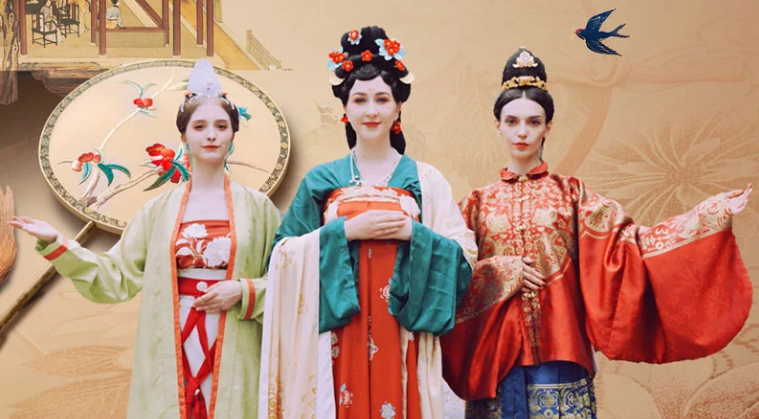
Historical Evolution
From the Han Dynasty (206 BC – 220 AD) onwards, hanfu evolved significantly. During each subsequent dynasty, new styles and elements emerged, such as the incorporation of wider sleeves, longer robes, and the use of intricate embroidery. For example, the Tang Dynasty (618-907 AD) introduced vibrant colors and more relaxed fits, reflecting the openness and prosperity of that period. These changes not only indicate fashion trends but also mirror historical and societal shifts in China.
Cultural Significance
Hanfu goes beyond being merely a style of dress. It embodies the aesthetics, philosophy, and ethics of traditional Chinese culture. The Confucian ideals of propriety, modesty, and rites profoundly influenced hanfu’s designs. Elements like the right lapel over left, the use of sashes, and embroidered motifs are rich in symbolism. For instance, the dragon and phoenix designs typically symbolize power and auspiciousness.
Contemporary Relevance and Revival
In modern times, hanfu has seen a revival among young Chinese, especially due to its presence in popular culture and social media. Events like the Hanfu Movement, which started in the early 2000s, advocate for wearing hanfu as a way to connect with and preserve Chinese cultural heritage.
Modern Adaptations
Today’s hanfu designers blend traditional motifs with modern fashion trends, making it more accessible and appealing to a broader audience. Materials used range from silk and brocade to more modern, cost-effective fabrics. The average cost of a quality hanfu can vary significantly, typically ranging from $30 to over $300, depending on the material quality, craftsmanship, and intricacy of design.
Popularity Abroad
The growing international interest in Chinese culture, spurred by the global spread of Chinese movies, dramas, and literature featuring hanfu, has led to increased curiosity and adoption of the attire worldwide. This cross-cultural exchange highlights the evolving nature of cultural appreciation and globalization.
Conclusion
Hanfu, as a cultural symbol, carries profound historical and ethical significance. Its resurgence and adaptation in the modern era illustrate the dynamic nature of cultural heritage and its ability to bridge past and present, home and world. With a rich history and a living presence, hanfu continues to be a vibrant and significant element of Chinese culture. Its journey from ancient dynasties to global stages marks the evolving narrative of Chinese identity and aesthetics.
The Globalization of Traditional Attires
The Rise of Traditional Attires in the Global Fashion Scene
In recent decades, traditional attires like the Japanese kimono, Indian saree, African dashiki, and of course, the Chinese hanfu, have made significant inroads into the global fashion market. This trend showcases the growing interest in cultural diversity and the appreciation of global fashion heritage.
Impact of Globalization on Traditional Wear
Globalization has enabled the spread of cultural products, including traditional clothing, across borders. With increased travel, migration, and digital connectivity, people around the world are more exposed to and interested in different cultures’ traditional attires. This interaction facilitates a greater understanding and appreciation of diverse cultural identities.
Fashion Fusion and Innovation
Designers often incorporate elements of traditional attires into contemporary fashion, creating fusion styles that appeal to a broader audience. For instance, modern hanfu designs might integrate western-style cuts or fabrics while retaining traditional motifs, catering to tastes that favor a blend of the old and the new. These innovative designs often highlight the quality and versatility of traditional attires, adapting them to various contexts, from formal events to casual wear.
Economic Aspects and Market Trends
The market for traditional attires like hanfu is expanding, not only in their countries of origin but globally. The rise in popularity often translates to an increase in demand and thus a boost in the economic value of these garments.
Cost Factors and Accessibility
The cost of authentic traditional attires can vary widely based on materials, craftsmanship, and authenticity. For instance, a handcrafted silk kimono or a finely woven Indian saree can cost several hundred to thousands of dollars, while more commercial, mass-produced versions might be available at a fraction of that price. The materials used play a significant role in determining the cost. Silk, for instance, being a premium material, often commands a higher price.
Market Dynamics and Consumer Interest
The growing global interest in traditional costumes has spurred an increase in their availability and variety in the international market. E-commerce platforms and social media have played crucial roles in this expansion, connecting artisans and designers with a global audience. This increased market reach not only boosts sales but also encourages the preservation and continuation of traditional craftsmanship.
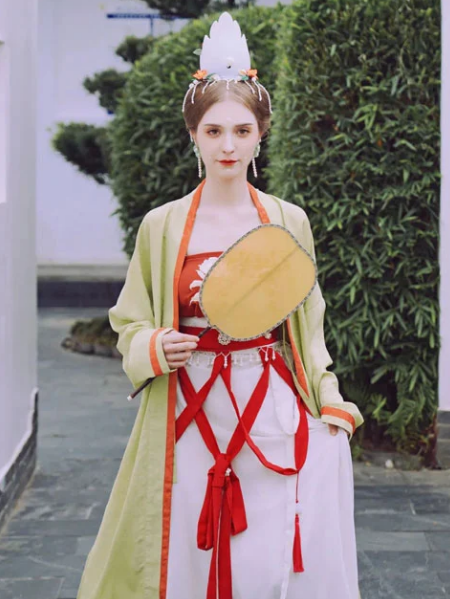
Challenges and Considerations
While the globalization of traditional attires offers numerous benefits, it also comes with challenges. Issues around cultural appropriation, quality degradation in mass production, and the potential loss of cultural uniqueness are ongoing concerns.
Navigating Cultural Sensitivity
When traditional attires cross cultural boundaries, it becomes vital to approach them with respect and sensitivity. Wearing another culture’s traditional dress should involve an understanding and appreciation of its significance. Avoiding cultural appropriation and focusing on cultural appreciation remains a delicate balance, requiring ongoing dialogue and understanding.
Quality and Authenticity Concerns
In the race to meet rising demand, there can be a temptation to compromise on quality or to deviate from authentic designs, which might dilute the cultural essence of these attires. Authentic, high-quality pieces not only ensure longevity but also help in preserving the integrity and authenticity of the attire.
Conclusion
The globalization of traditional attires reflects the world’s growing appreciation of cultural diversity and heritage. While this trend offers economic opportunities and fosters cultural exchange, it also calls for responsible consumerism and cultural sensitivity.
Respect and Appreciation vs. Cultural Appropriation: Where Does Hanfu Stand?
Understanding Cultural Appropriation and Appreciation
Cultural appropriation involves adopting elements of one culture by members of another culture, often without understanding, respect, or acknowledgment. This can lead to misrepresentations and can sometimes be offensive, particularly when the appropriated elements have deep cultural, religious, or historical significance. Cultural appreciation, on the other hand, is about engaging with and valuing other cultures with respect, understanding, and acknowledgment of their value and history.
Defining Lines in Fashion
In the world of fashion, distinguishing between cultural appropriation and appreciation can be complex. It often boils down to the intention behind wearing the attire and the awareness of its cultural significance. For instance, wearing hanfu or another culture’s traditional dress at a themed event aiming to honor that culture might be seen as appreciation. Conversely, wearing these attires without understanding their cultural context or as a fashion statement alone might be viewed as appropriation.
Hanfu in the Spotlight
Hanfu, traditionally worn by the Han ethnic group, holds substantial historical and cultural value. The patterns, colors, and styles in hanfu are not just aesthetic choices but are deeply entwined with Chinese history and philosophies. When individuals wear hanfu without this awareness, it can sometimes lead to accusations of cultural appropriation.
Hanfu’s Place in Global Fashion
Hanfu’s rising popularity has introduced these beautiful garments to a global audience. Individuals and communities often , intrigued by its elegance and historical depth.
International Views on Wearing Hanfu
Different perspectives exist on non-Chinese people wearing hanfu. Some view it as a form of cultural appreciation and a way to celebrate and spread Chinese culture globally. Others feel it might dilute or misrepresent the cultural significance of the attire. The key lies in the approach – wearing hanfu respectfully, understanding its history, and recognizing its cultural significance align more with appreciation.
Impact of Misrepresentation
Incorrect or insensitive portrayal of hanfu, especially in media or at public events, can lead to misunderstandings about Chinese culture. For instance, using hanfu in inappropriate settings or altering its traditional designs beyond recognition could be seen as disrespectful or misrepresentative.
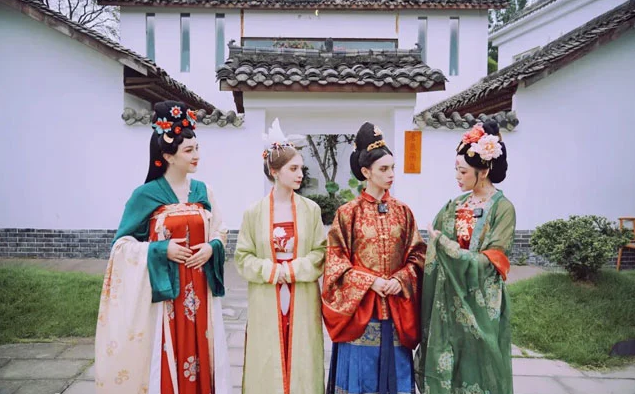
Guidelines for Cultural Respect and Appreciation
Wearing traditional attires like hanfu involves more than just putting on a piece of clothing. It’s about respecting and engaging with the culture from which it originates.
Educate Yourself
Before wearing hanfu, learning about its origins, variations, and significance in different Chinese dynasties is crucial. Understanding the cultural backdrop adds depth to the act of wearing it and ensures respect and appreciation are at the forefront.
Context Matters
Consider the occasion and context when choosing to wear hanfu. Wearing it at cultural festivals, events focusing on Chinese traditions, or ceremonies that honor Chinese culture is usually appropriate and appreciated. Randomly wearing it as a trendy outfit might not be received in the same way.
Engage with the Community
Engaging with the Chinese community and listening to their perspectives about non-Chinese wearing hanfu can provide valuable insights and foster mutual respect and understanding.
Conclusion
The debate around respect, appreciation, and cultural appropriation regarding non-Chinese wearing hanfu reflects broader dialogues about globalization and cultural exchange. Striking the right balance involves education, understanding, and respect for the cultural significance of these traditional garments. Wearing hanfu can be an enriching experience that celebrates Chinese culture, as long as it’s done with the right intent and understanding.
Etiquette and Guidelines for Non-Chinese Wearing Hanfu
Understanding the Significance of Hanfu
Before delving into the etiquette of wearing hanfu, it’s crucial to understand its cultural and historical significance. Hanfu isn’t just traditional clothing; it embodies thousands of years of Chinese history, culture, and values. Recognizing this deep significance is the first step toward respecting the attire and the culture it represents.
Historical and Cultural Context
Hanfu dates back to the Han Dynasty, symbolizing a pivotal era in Chinese history and culture. Its styles, fabrics, and patterns are not merely fashion choices but are deeply entwined with Chinese identity, philosophy, and social norms. Learning about these aspects can deepen one’s appreciation and respect for hanfu.
More Than Just Fashion
While hanfu has recently seen a revival as a fashion trend, its value goes beyond aesthetics. It represents a connection to ancestry, tradition, and national pride for many Chinese people. Acknowledging this emotional and cultural connection is essential for anyone considering wearing hanfu.
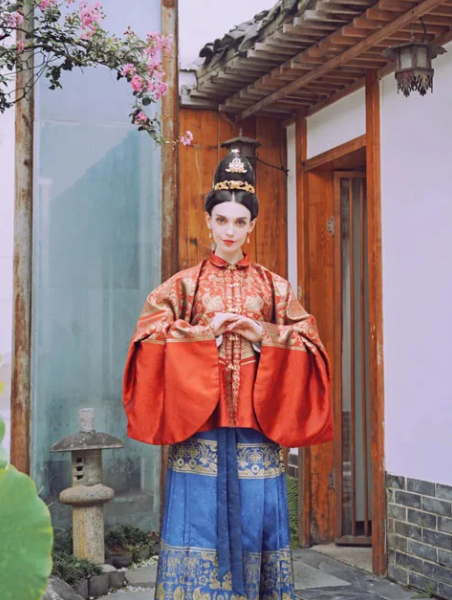
Etiquette Guidelines for Wearing Hanfu
When individuals choose to wear hanfu, following certain etiquette can demonstrate respect and appreciation for the culture.
Choose the Right Occasion
Wearing hanfu is most appropriate at cultural festivals, Chinese traditional events, or educational settings where cultural exchange is the focus. Avoid wearing hanfu in situations where its cultural significance might be overshadowed or misunderstood.
Avoid Misrepresentation
Ensure that the way hanfu is worn doesn’t misrepresent or caricature Chinese culture. This means wearing the attire correctly and avoiding mixing it with elements from other cultures in a way that might be seen as disrespectful or diluting its cultural authenticity.
Seeking Guidance and Learning
Taking the initiative to learn about hanfu and seeking guidance from those knowledgeable in Chinese culture can enhance the experience of wearing this attire.
Learning from Authentic Sources
Engage with authentic sources of information about hanfu, such as cultural experts, historians, or traditional Chinese fashion practitioners. This can include attending workshops, reading books, or exploring educational content online.
Respectful Representation
When wearing hanfu, aim for a representation that honors the dignity and beauty of Chinese culture. Show humility and readiness to learn, and be open to feedback from members of the Chinese community.
Conclusion
The etiquette of wearing hanfu as a non-Chinese individual centers around respect, understanding, and appropriateness. Recognizing hanfu’s deep cultural significance, choosing the right occasions to wear it, avoiding misrepresentation, and engaging in continuous learning are key to respecting this significant aspect of Chinese heritage.
Voices from the Chinese Community: Opinions on Sharing Their Cultural Heritage
Diverse Perspectives within the Chinese Community
The Chinese community, not monolithic in its opinions and beliefs, holds varied views on sharing their cultural heritage, including the wearing of hanfu by non-Chinese individuals. These perspectives range from pride and enthusiasm for sharing their culture to concerns about misrepresentation and cultural appropriation.
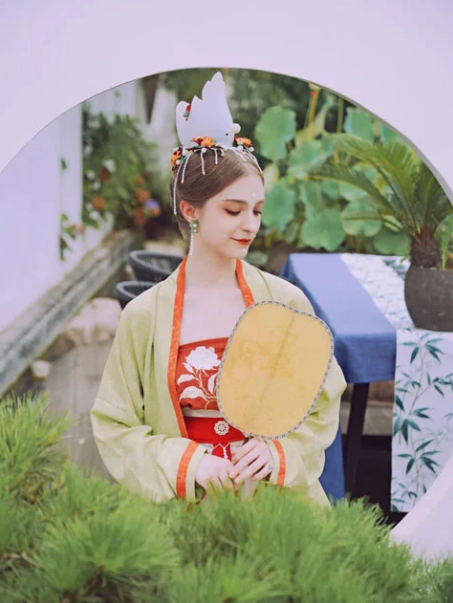
Support for Cultural Exchange
Many within the Chinese community feel a sense of pride when they see their cultural attire gain appreciation globally. They view the wearing of hanfu by non-Chinese people as a positive reflection of China’s rich cultural heritage and an effective way to share it with the world. This group often emphasizes the importance of cultural exchange in fostering mutual understanding and global harmony.
Concerns Over Cultural Appropriation
Conversely, some express concern that when individuals wear hanfu, it might lead to oversimplification or misunderstanding of the culture. They worry about the loss of the attire’s historical and cultural significance, reducing it to merely an exotic costume. These concerns are particularly potent when the usage of hanfu lacks context or strays far from its traditional aesthetics and symbolism.
Impact of Social Media and Globalization
The rise of social media and globalization has significantly influenced how Chinese cultural heritage, like hanfu, is shared and perceived worldwide. These platforms have both positive and negative effects on cultural exchange.
Promoting Understanding Through Digital Platforms
Platforms like TikTok, Instagram, and YouTube have enabled individuals from various cultures to showcase their appreciation and interpretation of hanfu, often drawing positive attention and curiosity towards Chinese culture. This visibility can help demystify Chinese traditions and promote a more nuanced understanding of the culture.
Risks of Misrepresentation Online
However, the lack of depth and context in social media portrayals can sometimes lead to misinterpretation or superficial representation of Chinese culture. The nuanced symbolism embedded in different styles of hanfu and the specific contexts in which it’s traditionally worn might get lost or misrepresented in the digital realm.
Balancing Respect with Global Trends
Finding a balance between respecting a culture and keeping up with global fashion trends is crucial. The Chinese community often emphasizes the need for mindfulness and respect when it comes to sharing and adopting cultural elements like hanfu.
Educational Approach to Cultural Sharing
Many advocate for an educational approach where sharing cultural elements goes hand in hand with learning and teaching about their significance. For instance, when individuals choose to wear hanfu, accompanying this choice with efforts to learn about Chinese history and traditions can be seen as a respectful way of cultural sharing.
Encouraging Respectful Dialogue
Fostering open and respectful dialogue between different cultures is essential. Engaging with members of the Chinese community, listening to their views on cultural sharing, and understanding the diversity within these opinions help in creating a more inclusive and respectful approach to wearing hanfu.
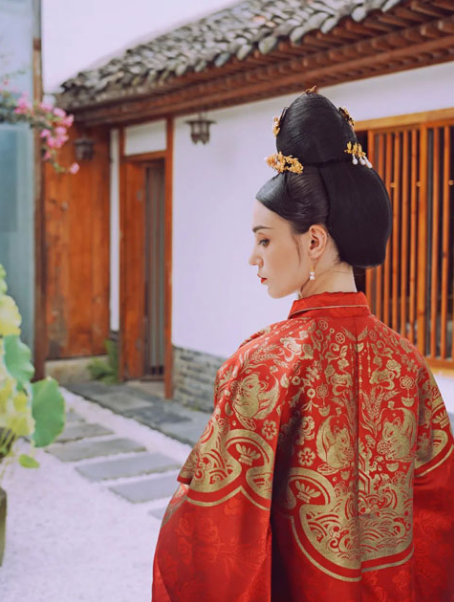
Conclusion
The Chinese community’s views on sharing their cultural heritage, specifically regarding non-Chinese wearing hanfu, are varied and complex. While there is considerable support for cultural exchange and appreciation, there are also valid concerns about misrepresentation and cultural appropriation. Navigating this landscape requires sensitivity, understanding, and an eagerness to engage in meaningful cultural exchange. Through respectful sharing and open dialogue, non-Chinese individuals can participate in and contribute to the rich tapestry of Chinese culture.
Case Studies: Instances of Non-Chinese Celebrities and Influencers Wearing Hanfu
Spotlight on Cultural Fusion
Several non-Chinese celebrities and influencers have donned hanfu, sparking discussions and bringing attention to this traditional Chinese attire. These instances provide insights into how cultural elements can cross geographical boundaries and how they resonate with different audiences.
Celebrities Embracing Hanfu
Some well-known international celebrities have been spotted wearing hanfu, either during visits to China, in movies, or as part of cultural exchange events. For example, Hollywood actors and pop stars wearing hanfu at film premieres or music videos often make headlines, drawing both admiration and critique. These moments highlight the appeal and aesthetic value of hanfu while also raising questions about cultural sensitivity and authenticity.
Influencers and Social Media Impact
Fashion and travel influencers on platforms like Instagram and YouTube have also embraced hanfu. Often, they wear these outfits during trips to China or at cultural festivals worldwide. Their posts and videos usually receive mixed reactions, ranging from appreciation of the beauty and elegance of hanfu to concerns over potential cultural misinterpretation.
Understanding Context and Reception
The context in which these celebrities and influencers wear hanfu and the way their audiences receive it are crucial aspects of these case studies.
Positive Reception and Cultural Curiosity
In many cases, the wearing of hanfu by non-Chinese celebrities and influencers has been met with positive reactions. Fans and followers often express admiration for the beauty of the attire and curiosity about its cultural background. This kind of engagement can serve as a gateway for people to learn more about Chinese culture and history.
Criticism and the Cultural Appropriation Debate
However, some instances have led to criticism, especially when the attire is worn without proper context or understanding, or when it’s used in a way that is seen as trivializing or misrepresenting Chinese culture. Critics often argue that while cultural exchange is valuable, it should be approached with respect and a deep understanding of the cultural significance of what is being exchanged.
The Role of Education in Cultural Exchange
To navigate the complexities of wearing traditional cultural attire like hanfu in a globalized world, education plays a pivotal role.

Learning from Each Case
Each instance of a non-Chinese celebrity or influencer wearing hanfu offers an opportunity for dialogue and education. By examining these cases, individuals can learn about the importance of context, the nuances of cultural representation, and how to engage with different cultures respectfully.
Moving Beyond Aesthetic Appreciation
While appreciating the aesthetic beauty of hanfu is a start, delving deeper into its historical and cultural significance offers a more enriching and respectful way to engage with the attire. This approach not only prevents superficial or stereotypical representations but also enhances cross-cultural understanding.
Conclusion
The cases of non-Chinese celebrities and influencers wearing hanfu illustrate the complexities and opportunities in cultural exchange. They underscore the importance of understanding and respecting the cultural contexts from which these traditional attires originate. By focusing on education and thoughtful engagement, such instances can enhance appreciation and respect for diverse cultures rather than trivializing them.
This section delves into the nuanced interactions between global celebrities, influencers, and traditional Chinese attire, emphasizing the importance of context and respectful cultural engagement. It showcases how each instance can become a learning opportunity, reinforcing the need for thoughtful cultural exchange. For further reading, the link to Wikipedia: Cultural globalization offers additional insights.